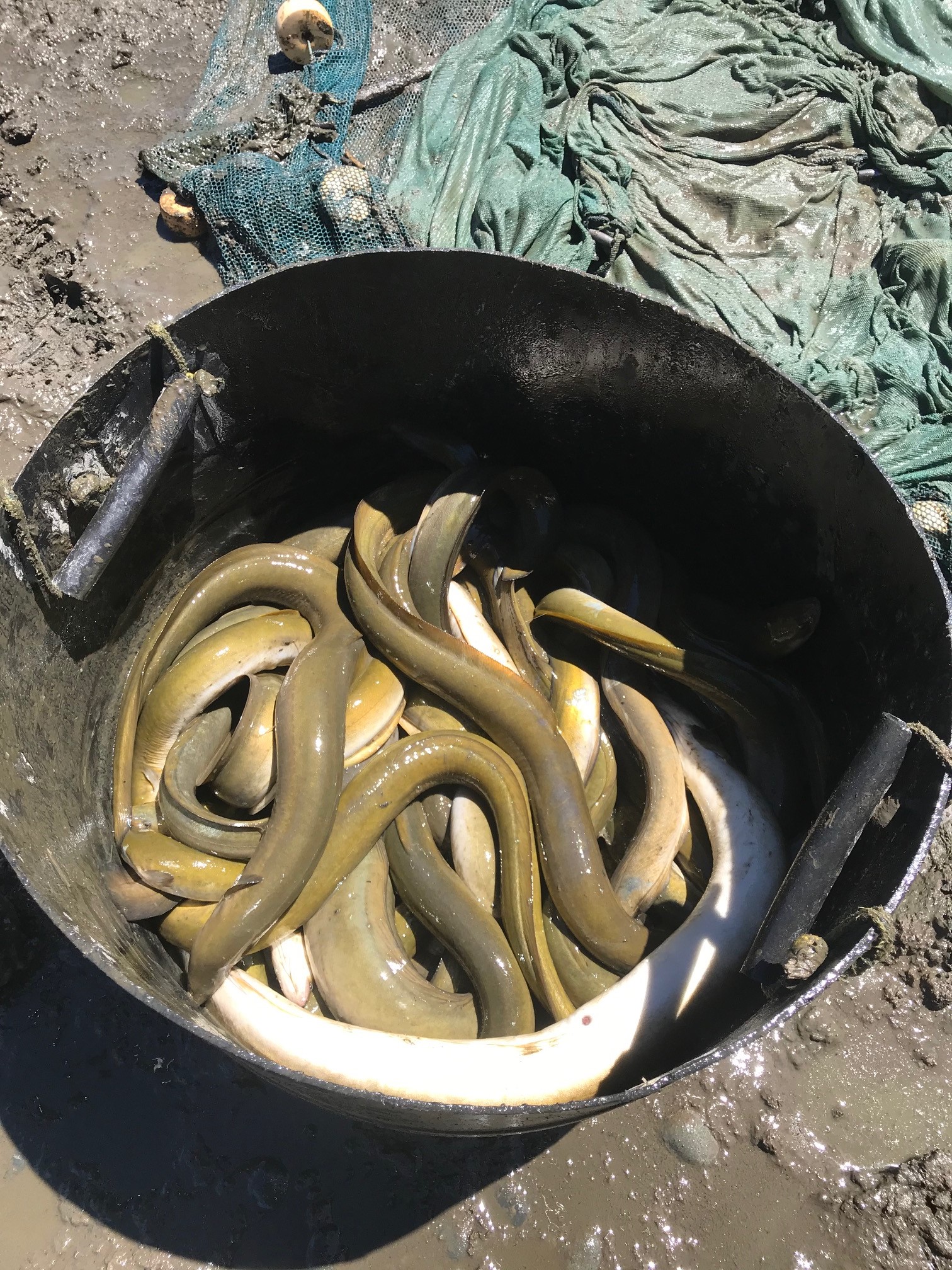
About 200 were rescued prior to Christmas and several hundred since as dry conditions reduced the pit to a large mud puddle.
In a last-ditch effort to protect those that had burrowed deeply into the mud, the Swannanoa Fire Brigade was called in to pour a truck-load of water in to help protect those remaining.
Makarini Rupene, pou matai ko/cultural land management adviser for the area extending from the Waimakariri to Kaikoura, says the eels, which are an important mahinga kai (food source) for his people, have been relocated to a safe freshwater environment.
Makarini, who is also the chairman of the Tangata Tiaki Kaitiaki board of Ngai Tuahuriri Runanga, which plays a part in guarding food sources, is appealing to farmers and landowners to contact Environment Canterbury if they have water races or ponds on their properties that are drying out.
He says it is important that people know the significance of what they have on their land and its importance to the eco-system.

Rescuers initially used electric fishing to catch the eels, before turning to nets.
"Over the Christmas period I went back with family and took out another 100 eels," Makarini says.
As the pond dried up it was a matter of wading around in a 10 metre by 10 metre mud puddle, sometimes up to their waists, catching eels by hand.
ECan and Department of Conservation staff helped in the rescue of around another 200 eels, but eventually had to give up as the remaining few eels were dug deep in the mud.
Makarini says he will be keeping a close eye on the pit and will rescue any other eels that come to the surface.
It was the second time in 10 years Whites Pit had dried up and he is keen to understand its hydrology.
"This emphasises the importance of water and looking after our waterways," he said.















